In the U.S. we go "hiking" on a "trail". Ross Powell is originally from New Zealand. (Read more about Ross in the expedition High Arctic Change '09 *Overview *tab.) He says that in New Zealand, it's known as "tramping" on a "track". In order for our expedition crew to get started on our research, we needed to get to know the area we are working in. We also needed to "see, touch, and smell, . . . oh yeah, and hear" a glacier and get to learn what it can tell us about what is going on here. So . . . we went "tramping on a glacier". Actually, 4 of them.
It's easy to see glaciers as just huge chunks of ice that just sit there. Maybe with a little snow on top. They are beautiful to look at in person, or in pictures. But glaciers are more. From the way they form, where they occur on Earth, and how they move, erode and deposit unbelievable amounts of rock, glaciers are very dynamic. And very fascinating. And that's why we are here. Here, in Svalbard, where any direction you look you can see glaciers flowing out of, and carving down, the mountains into the sea. The types of glaciers we will be studying are called *tidewater glaciers**.
To learn about glaciers, try: http://en.wikipedia.org/wiki/Glacier
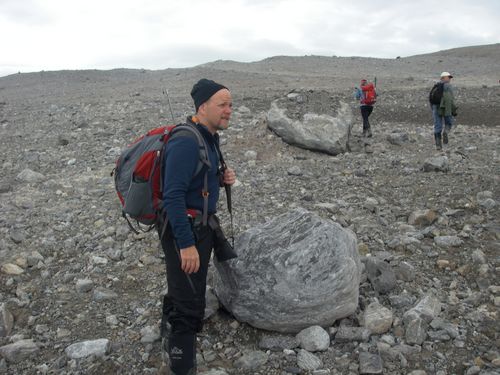 This is what a glacier leaves behind. Piles and piles of unsorted rock. Big, small & in between.
This is what a glacier leaves behind. Piles and piles of unsorted rock. Big, small & in between.
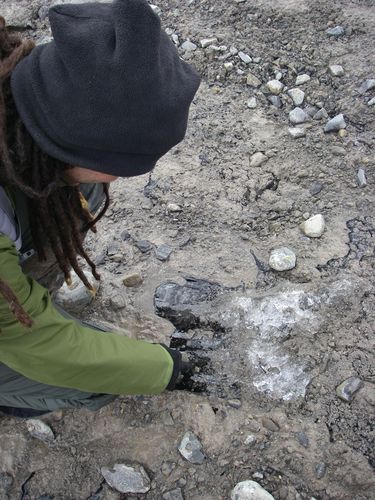 Hector scrapes away the muck & till to find solid ice still underneath.
Hector scrapes away the muck & till to find solid ice still underneath.
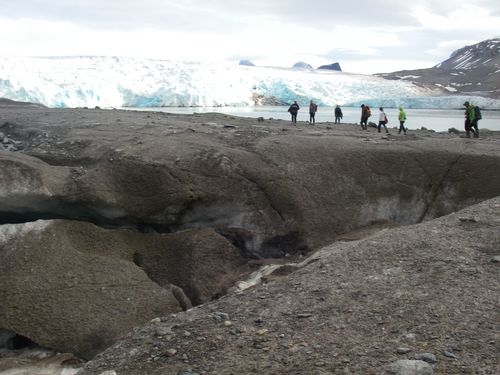 That is ice & rock we are walking on.
That is ice & rock we are walking on.
 Notice the amount of sediment in this sub-glacial meltwater stream.
Notice the amount of sediment in this sub-glacial meltwater stream.
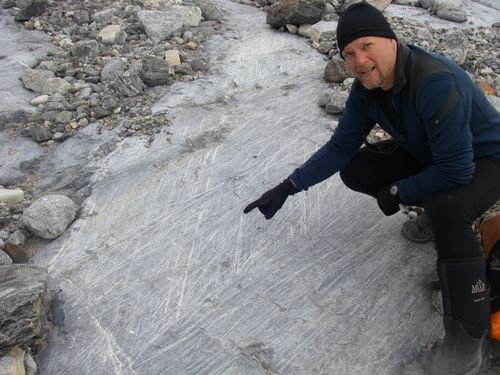 Mike is pointing at striations in the bedrock. Striations are scratches in bedrock made by rocks stuck in the bottom of a flowing glacier. You can tell the direction of glavier flow by the striations.
Mike is pointing at striations in the bedrock. Striations are scratches in bedrock made by rocks stuck in the bottom of a flowing glacier. You can tell the direction of glavier flow by the striations.
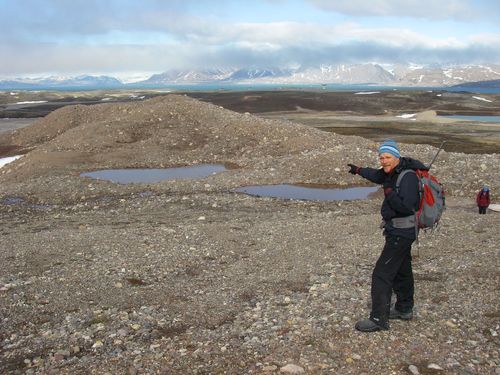 Moraines are piles of till left at the sides or end of a glacier. Kettles are bowl-shaped hollows in the ground left when burried blocks of ice melt.
Moraines are piles of till left at the sides or end of a glacier. Kettles are bowl-shaped hollows in the ground left when burried blocks of ice melt.
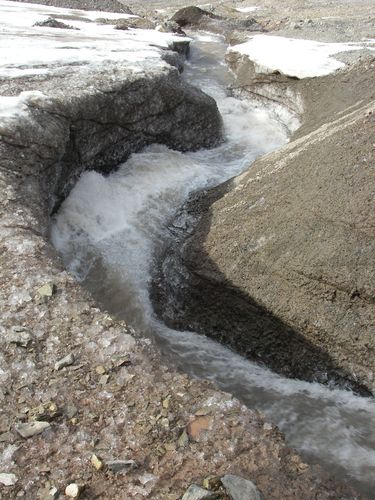 Surface meltwater stream downcutting into the glacier.
Surface meltwater stream downcutting into the glacier.
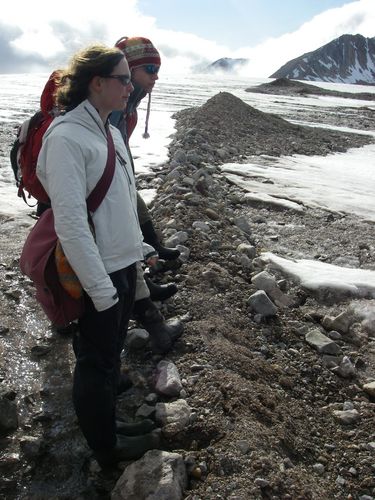 Laura 2x on a small till ridge.
Laura 2x on a small till ridge.
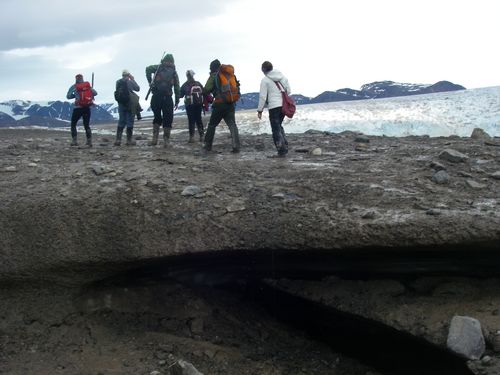 Walking on ice undercut by sub-glacial meltwater stream.
Walking on ice undercut by sub-glacial meltwater stream.
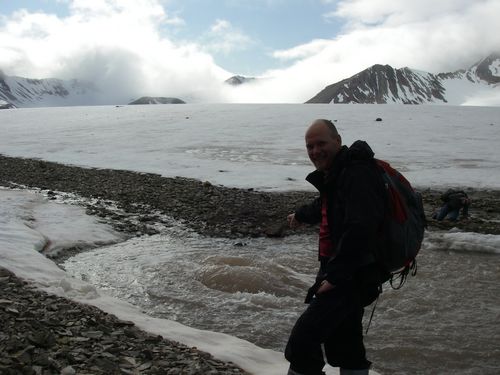 Notice the small stream above, then the huge volume bubbling out. This is a sub-glacial stream coming to the surface. 1000's of gallons more!
Notice the small stream above, then the huge volume bubbling out. This is a sub-glacial stream coming to the surface. 1000's of gallons more!
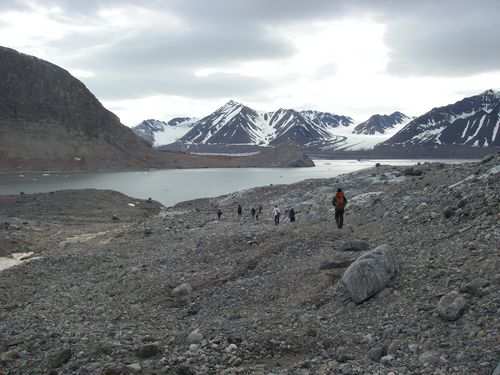 Time to head back. Walking across till and bedrock back to our boats.
Time to head back. Walking across till and bedrock back to our boats.
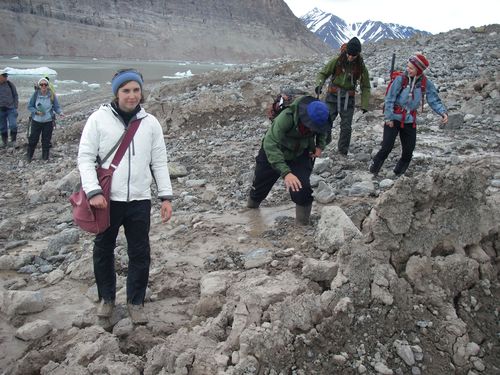 Melting glaciers have lots of muck. Good thing we're wearing our "Muck boots".
Melting glaciers have lots of muck. Good thing we're wearing our "Muck boots".
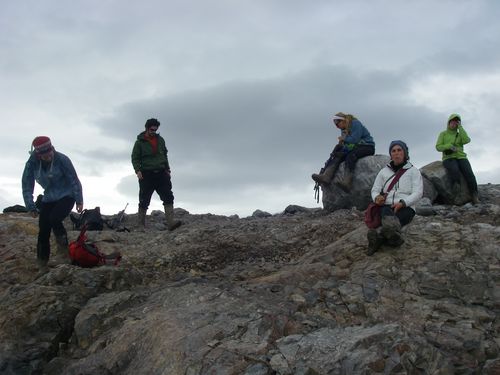 Glaciers drop all sizes of rocks when they melt. Including great "lunch rocks".
Glaciers drop all sizes of rocks when they melt. Including great "lunch rocks".
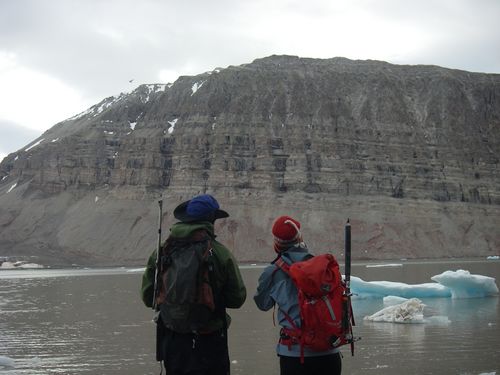 There was once ice to the top of that mountain. The glacier eroded it down and exposed the rock layers to show some geologic history.
There was once ice to the top of that mountain. The glacier eroded it down and exposed the rock layers to show some geologic history.
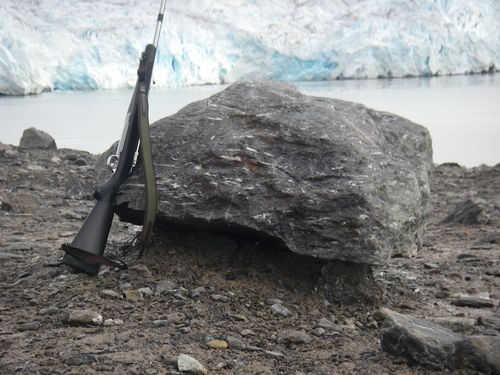 This huge boulder is being held up off the ground by solid ice. The boulder protects the ice from melting.
This huge boulder is being held up off the ground by solid ice. The boulder protects the ice from melting.
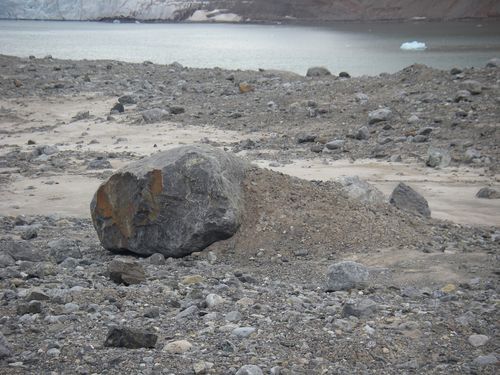 Direction of glacier movement can be seen by the sediment built up behind this big rock.
Direction of glacier movement can be seen by the sediment built up behind this big rock.
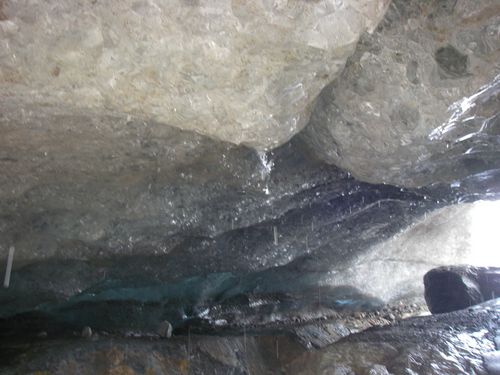 Meltwater glacial ice cave. Notice the rocks in the ice and the rate of melting.
Meltwater glacial ice cave. Notice the rocks in the ice and the rate of melting.
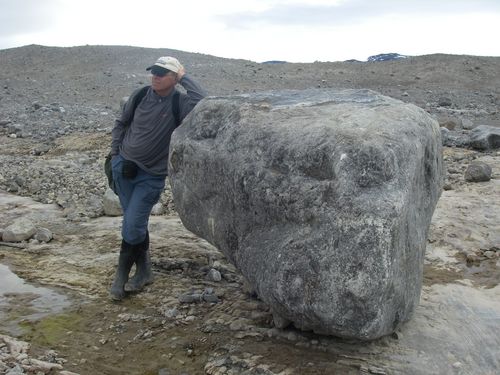 Ross takes a break on a huge boulder dropped out of the glacier.
Ross takes a break on a huge boulder dropped out of the glacier.
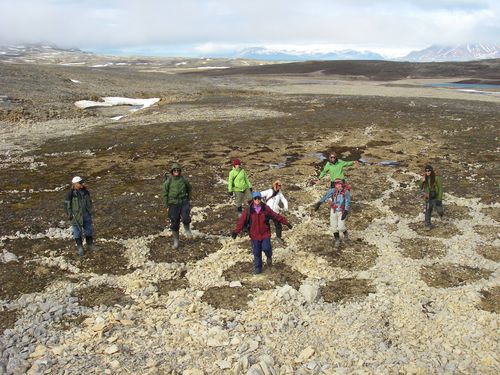 A unique phenomenon. No, not our crew standing on one leg inside stone circles. It's the stone circles. They're caused by freeze/thaw cycles in active layer of permafrost.
A unique phenomenon. No, not our crew standing on one leg inside stone circles. It's the stone circles. They're caused by freeze/thaw cycles in active layer of permafrost.
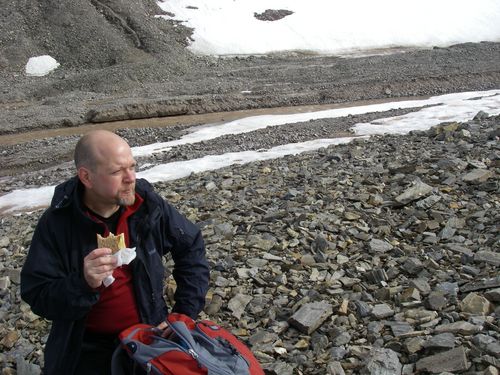 Who wouldn't enjoy a Norwegian bologna & cheese samich on a glacier moraine?
Who wouldn't enjoy a Norwegian bologna & cheese samich on a glacier moraine?
Coming up:
So who are these people I'm working with? What is REU?
And, what do Bates, Bryn Mawr, Dartmouth, Miami, UTEP, & Whitman have to do with Svalbard?
- see Project Vocabulary under Overview tab

